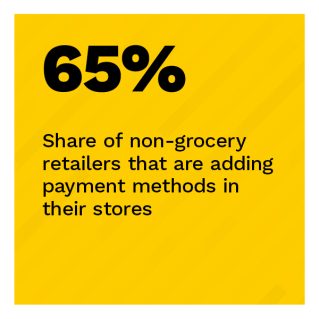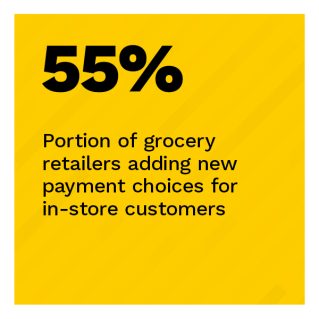How Digital Payments Solve Bad Retail Experiences

Some of the world’s biggest retailers are experiencing a paradigm shift. They are focusing on user experience in-store as a key feature of their competitiveness not only against each other but against the threat of online shopping. According to a recent PYMNTS and ACI survey, 66% of online grocery shoppers used digital channels because they found it easier and more convenient than shopping in-store. Now retailers are mandated to make physical shopping as easy and convenient as eCommerce. 
“Navigating Big Retail’s Digital Shift: The New Payments Strategy Evolution,” a PYMNTS and ACI Worldwide collaboration, examines how retailers view in-store user experience innovation and details how they should focus their efforts to engage and retain customers.
Convenience is still key, but customers want more.
According to 2022 PYMNTS research, most of the largest retailers in the United Kingdom and the United States see the quality of customers’ digital payments experiences as a deciding factor in their long-term growth. This has powered a wave of user experience innovation, with forward-thinking retailers adopting features that ease consumers’ most salient shopping pain points.
Many retailers feel that the digital tools they currently use leave them ill-equipped to meet the minimum experience standards.  In addition, as most surveyed retailers see modernization as the key to survival, they are looking to remove friction and offer more checkout options for both online and in-store shopping.
In addition, as most surveyed retailers see modernization as the key to survival, they are looking to remove friction and offer more checkout options for both online and in-store shopping.
That means consumers will likely benefit from easier in-store shopping experiences, and retailers seeking to compete with innovative retailers must adopt new tools to make in-store shopping easier for consumers.
Larger retailers are modernizing the customer experience by implementing expanded in-store payment choices.
Big retail companies know convenience may no longer be enough to keep their consumers engaged. Customers can find many of the same products online as they can in-store, so in-store shopping experiences must be, at minimum, just as convenient as online experiences to appeal to consumers who may see little reason to visit a physical store. As the report notes, a recent survey found that 34% of grocery shoppers may shift to shopping online for products they usually purchase in-store based on convenience. This potential shift makes it essential for retailers to remove friction from in-store purchasing at critical touchpoints, such as checkout and inventory checks.
That translates into innovative digital features streamlining customers’ journeys through the aisles. Retailers believe convenience and frictionless digital payments are essential to retaining customers. Key features include access to mobile shopping apps and alternative payment methods.
Retailers are leveraging customer data to find new ways to please customers.
While most of the largest retailers are implementing new options like new payment methods to simplify shopping for consumers, they are also digging into consumer data to discover how to tailor offerings to match their audience’s preferences.
Our research shows that retailers are looking to customer data to glean insights into the user experiences consumers prefer. But in addition to needs — such as frictionless payments and practical conveniences — consumers also have “wants,” including the ability to shop using QR codes or pay with various mobile wallets.
To learn more about how retailers are shifting their payments strategies to match consumer preferences, download the report.
